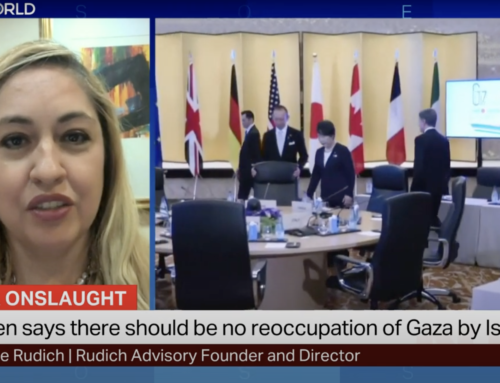FATF turns 30: The evolution and impact of the AML/CFT standard setter – part 1– co-authored with Andrew Liu
The Financial Action Task Force (FATF) celebrated its 30th anniversary at its plenary in Orlando in June 2019. Since its inception, the FATF has spearheaded international efforts to fight financial crime. Founded as a joint UK-U.S. initiative at the 1989 Group of 7 (G7) Paris Summit to tackle the proceeds of drug trafficking, it has evolved into the most important standard-setting body in the field of anti-money laundering (AML) and counter-terrorist financing (CTF).
It is estimated that 3.1% of global turnover (approximately $1.28 trillion) is spent combating financial crime. In Europe alone, financial institutions are thought to have spent $83.5 billion on AML/CTF compliance in 2017. By comparison, AML compliance budgets in Asia totalled $1.5 billion annually in 2016. And in 2018, the AML compliance costs of financial services firms in North America were estimated at $25.3 billion each year.
This is the first in a three-part series of articles to commemorate the FATF’s 30th anniversary. The anniversary provides an opportunity to explore how the FATF has evolved as an organisation, driving the transformation of soft law at an international level into national law. The articles will also look at how the FTF has paved the way for some of the major enforcement actions seen against financial institutions in recent years.
Evolution in the FAFT’s mandate
The FATF was first set up as a task force whose mandate needed to be renewed by the G7 to develop a set of standards that could be adopted by financial institutions to tackle money laundering and to identify and/or keep the proceeds of drug trafficking out of the banking system. The FATF developed a report containing 40 recommendations for its member states. Initially, the FATF focused solely on AML as linked to drug trafficking.
Following the terrorist attacks of 9/11, however, the FATF began to look at how to counter the financing of terrorism, for example, through the inclusion of originator and beneficiary information on wire transfers and freezing and confiscation terrorist assets. Immediately after the attacks, the United Nations Security Council passed two resolutions to combat terrorism and terrorist financing, and the FATF issued an additional eight special recommendations to combat terrorist financing.
The FATF then comprehensively revised its standards in 2003, to address more closely the continuously evolving methods of money laundering linked to other crimes. It added a ninth recommendation in 2004, establishing the standards of assessment on compliance for supra-national jurisdictions.
In 2012, the FATF conducted a major review of its recommendations and revised them to “strengthen global safeguards and further protect the integrity of the financial system by providing governments with stronger tools to take action against financial crime.”
The 2012 revamp incorporated the additional eight special recommendations into the 40 recommendations it placed specific emphasis on predicate offences for money laundering, such as expanding beyond the trafficking of narcotics into, for the first time, the financing of proliferation of weapons of mass destruction, and corruption.
The FATF updated its standards most recently in October 2018 and June 2019, to reflect the unique risks posed by technology and the rise of virtual assets and cryptocurrencies. Financial institutions and designated non-financial businesses and professionals (DNFBPs) should be aware of the predicated offences and emerging risks to which their businesses may be exposed.
In recognition of its contribution to AML/CFT, the FATF’s mandate “to continue establishing the international standards for combating money laundering and terrorist financing” was reaffirmed. It was also given an open mandate, establishing it as a permanent body and as the lead organisation in the coordination of worldwide AML/CFT efforts.
FATF’s influence on national law
The FATF’s recommendations are all non-binding, which means that its 39 member states are not obliged to comply with all the recommendations. And although the FATF 40 recommendations are, in effect, soft law, countries nevertheless comply. This is largely to do with its list of non-cooperative countries and jurisdiction (NCCTs), which it uses to “name and shame” countries identified as having inadequate AML/CFT frameworks.
There are separate levels of NCCTs: (1) where FATF issues a “call for action” on its members and other jurisdictions to apply counter-measures to protect the international financial system from substantial money laundering and financing of terrorism (ML/FT) risks; (2) where FATF carries out continuous monitoring on “jurisdictions with strategic deficiencies” for which they have developed an action plan as a high-level political commitment with the FATF to address deficiencies and (3) “jurisdictions no longer subject o monitoring” that have made significant progress in improving and enhancing the effectiveness of their AML/CFT regime.
There is a call to action against Iran and North Korea. A list of countries with AML/CFT deficiencies and that recently removed can be found here. These countries should be listed and countries representing a higher risk of money laundering in policies developed by financial institutions and designated non-financial businesses and professionals (DFNBPs).
Why is the FATF so influential?
The FATF’s success owes much to the backing it has received from significant international institutions. The initial support o the G7, which generally cites the work of the FATF at G7 Summits, and subsequently the G20’s support of the FATF’s work, have been crucial. The G2- regularly calls on the FATF to carry out new work to prevent and detect AML/CFT, particularly in support of anti-corruption initiatives. The FATF aims to work with international financial institutions such as the International Monetary Fund (IMF) and the World Bank to implement its standards.
Indeed, both IMF and World Bank (together with 22 international organisations which have observer status) work closely with the FATF and have endorsed its recommendations and methodologies. FATF’s recommendations are endorsed by more than 180 countries and it also works with member countries and FATF-Style Regional Bodies (FSRBs) to improve the domestic legal and financial systems of non-member countries and help them comply with the FATF recommendations. There are currently 9 FSRBs.
The FATF and FSRBs also publish AML/CFT typologies and methodologies as new risks are identified. Topics covered include terrorist financing, gold, non-for-profit organisations, counterfeit currency, gold, trade, emerging payment technologies and securities. Theses resources help compliance officers and investigators looking to develop training, set up transaction-monitoring systems and determine whether a transaction may be suspicious.
In its recent open letter mandate, the FATF said it is the “first global standard-setter to assess not only whether countries have the necessary legal and institutional frameworks in place but also how effectively countries are implementing these frameworks to combat the threats and mitigate the risks they face”.
Implementation of the recommendations is rigorously assessed through the mutual evaluation process. The FAFT uses the process to conduct a thorough analysis and assessment of countries’ AML/CFT systems, and to evaluate how they have complied with, and implemented, the recommendations in their financial systems.
member countries generally update or develop their national laws to comply with the recommendations. In this way, the soft laws established by the FATF have filtered down to become national laws in domestic contexts. Most financial institutions and DNFBPs around the world now have to comply with these laws, providing further evidence of the extent of the FATF’s influence.
The “soft law” nature of the recommendations allows countries flexibility in the way they adopt them; the recommendations can be tailored to suit an individual jurisdictions’ domestic legal and regulatory framework and the nature of any perceived risks in that jurisdiction.
The views and opinions expressed in the articles are the co-authors’ alone, and not those of the Department of Finance.
Originally published on Thomson Reuters Accelus
Download “2019_Nov15 FATF part 1.pdf”
2019_Nov15-FATF-part-1.pdf – Downloaded 579 times – 1 MB




